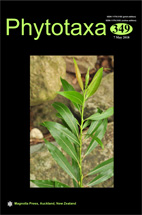Abstract
The genus Sehima was described by Forsskål (1775: 178) in Flora Aegyptiaco-Arabica. Hackel (1889) treated Sehima as a subgenus of the genus Ischaemum Linnaeus (1753: 1049). Hooker (1896) treated Sehima as a section of Ischaemum. Presently, Sehima comprises seven species distributed in the Old World tropics (Mabberley 2008). Four recognized species, viz. Sehima ischaemoides Forsskål (1775: 178), S. nervosa (Rottler 1803: 218) Stapf (1919: 36), S. notata (Hackel 1889: 246) A. Camus (1921: 373) and S. sulcata (Hackel 1889: 248) A. Camus (1921: 373), are distributed in India (Sur 1988). Sehima notata and S. sulcata are endemic to India (Singh et al. 2015). During taxonomic studies of the genus Sehima in India, we realized that two names were not lectotypified by Sur (1988) in his revisionary work on this genus. Therefore, we designate here the lectotypes for two names that are each basionyms of names of Sehima according to Art. 9.2 & 9.11 of the Melbourne Code (McNeill et al. 2012). Images of type specimens were procured from virtual databases of different herbaria CAL, G, K, NY and W (acronyms by Thiers 2016).

